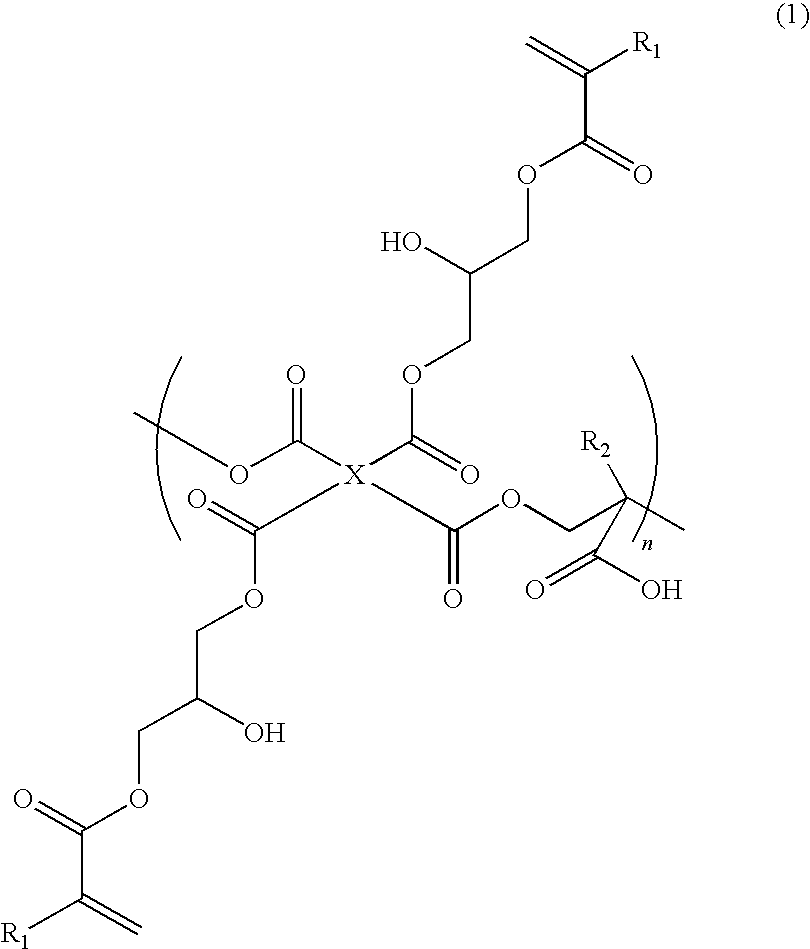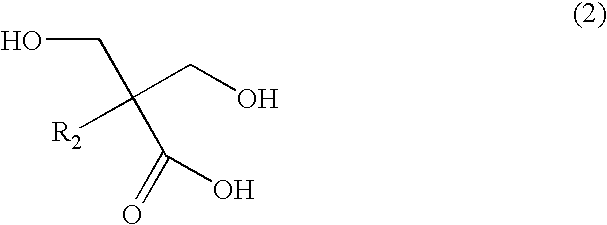Alkali-soluble resin and negative-type photosensitive resin composition comprising the same
a technology of negative-type and resin composition, which is applied in the field of alkali-soluble resin and negative-type photosensitive resin composition comprising the same, can solve the problems of large amount of photoresist consumed, disadvantageous incurring considerable costs in the purchase and operation of systems, and requires additional processing time for exposure, etc., to achieve high heat and chemical resistance and stable during storage
- Summary
- Abstract
- Description
- Claims
- Application Information
AI Technical Summary
Benefits of technology
Problems solved by technology
Method used
Image
Examples
examples 1-6
Preparation of Heat-Curable Ink Compositions Comprising Polyester Resin
example 1
[0076]The following components were mixed together with stirring for 5 hours to prepare a heat-curable blue ink composition for use in roll printing. The contents of the components are expressed as a percent based on the total weight of the components.[0077]Colorants: 3.76% by weight of a blue pigment (Pig. Blue #15:6) and 0.94% by weight of a violet pigment (Pig. Violet #23)[0078]Binder resins[0079]Acrylic resin: 1.54% by weight of a polymer (Mw=9,000, A.V. 90) prepared by addition polymerization of a benzyl (meth)acrylate / (meth)acrylic acid (70:30 (mol / mol)) copolymer with allyl glycidyl ether[0080]Polyester resin: 4.7% by weight of a polymer (Mw=12,400, A.V. 99) prepared by addition polymerization of a polycondensation product of ethylene glycol ditrimellitate / 2,2-bis(hydroxymethyl)propionic acid (70:100 (mol / mol)) with glycidyl methacrylate and hydroxyethyl methacrylate (140:7 (mol / mol))[0081]Polyfunctional monomer: 9.4% by weight of dipentaerythritol hexaacrylate[0082]Thermal p...
example 2
[0085]A blue ink composition for use in roll printing was prepared in the same manner as in Example 1 except that 6.24% by weight of the polyester resin was used singly as a binder resin without using the acrylic resin.
PUM
| Property | Measurement | Unit |
|---|---|---|
| boiling point | aaaaa | aaaaa |
| size | aaaaa | aaaaa |
| structure | aaaaa | aaaaa |
Abstract
Description
Claims
Application Information
 Login to View More
Login to View More - R&D
- Intellectual Property
- Life Sciences
- Materials
- Tech Scout
- Unparalleled Data Quality
- Higher Quality Content
- 60% Fewer Hallucinations
Browse by: Latest US Patents, China's latest patents, Technical Efficacy Thesaurus, Application Domain, Technology Topic, Popular Technical Reports.
© 2025 PatSnap. All rights reserved.Legal|Privacy policy|Modern Slavery Act Transparency Statement|Sitemap|About US| Contact US: help@patsnap.com



